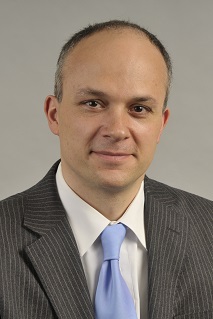
16 Jun TSRC Town Talks: Science & Tax Dollars
Franz Geiger speaks at the Telluride Conference Center starting at 6:00 p.m., Tuesday, June 21, part of Telluride Science Research Center’s (TSRC) Town Talks in Mountain Village. Admission is free; cash bar opens at 5:30 p.m.

Franz Geiger featured at upcoming TSRC Town Talk. Credit, Northwestern University.
The words exploration, innovation, and advancement don’t sound so sexy when tax dollars are added to the mix. Governmental funding, however, is imperative and integral to science departments across the United States.
The three biggest institutions giving grants to scientific non-defense projects, the National Institute of Health (NIH), the National Science Foundation (NSF) and the Department of Energy (DOE), operate largely on money from the government.
And these institutions are investing in the future.
It’s also important to fund across a variety of programs.
Franz Geiger, a lead research chemist and professor at Northwestern University, suggests thinking of it like the history of car companies in the U.S.
“The reason why we have three great car companies—Ford, GM, and Chrysler—today in the United States is because we started with 200. So you have to make that investment, even though a lot of that research is unlikely to produce a great company during the course of an award,” says Geiger.
While the government has funded research related to public health since the 1800s and during World War II, funded the Manhattan Project, there was no mechanism or agency for funding sustained research in all aspects of science and engineering.
Critical to the health of military personnel and the outcome of the war was the development of penicillin and the atomic bomb. The U.S. government wanted to maintain that advancement after the war, so the former president of MIT, Vannevar Bush, was given the task of creating a plan to do that. His solution was establishing the federally funded NSF—which sparked clear advances in science and engineering.
Science funding, however, doesn’t come cheap.
Geiger’s department alone has 200 graduate students to whom every year about 50 PhDs are awarded.
“That’s close to $400,000 per PhD, $4 million for 10, $20 million for 50 PhDs, or about $80 million for the entire cohort of 200 graduate students. And that’s just Northwestern,” says Geiger.
The vast majority of that money is federal, coming from tax dollars.
With each presidential election, funding is once again pushed into the limelight. Tax dollars are a contentious issue.
Enough said there.
But funding for science generally has bipartisan support.
Under Obama, science funding has almost doubled, which is truly extraordinary. As of now, Hillary Clinton has a similar stance of increasing funding for NIH and NSF, especially for studying Alzheimer’s disease. Donald Trump has no plan outlined so far.
“The investments we make now are investments into the future with uncertain outcomes,” Geiger says.
Investing in scientific research is a long-term process, sometimes over many decades, but the possibility of that one-in-a-million idea cannot be passed over lightly.
Science is inherent to the progress of the United States and to the world.
Next time April rolls around, remember that many of your tax dollars are investing in those three words: exploration, innovation and advancement.
About the TSRC Town Talks:
TSRC Town Talks are a series of weekly talks for the public, sponsored by the non-profit Telluride Science Research Center. Over 1,400 scientists from all over the world come to Telluride each year to discuss new ideas and build research partnerships. Learn more at telluridescience.org.


Sorry, the comment form is closed at this time.